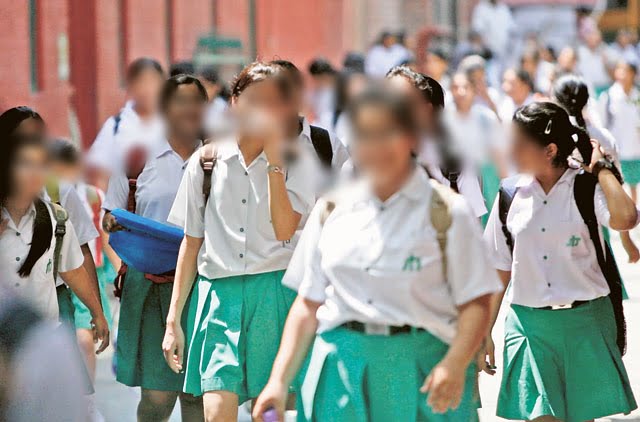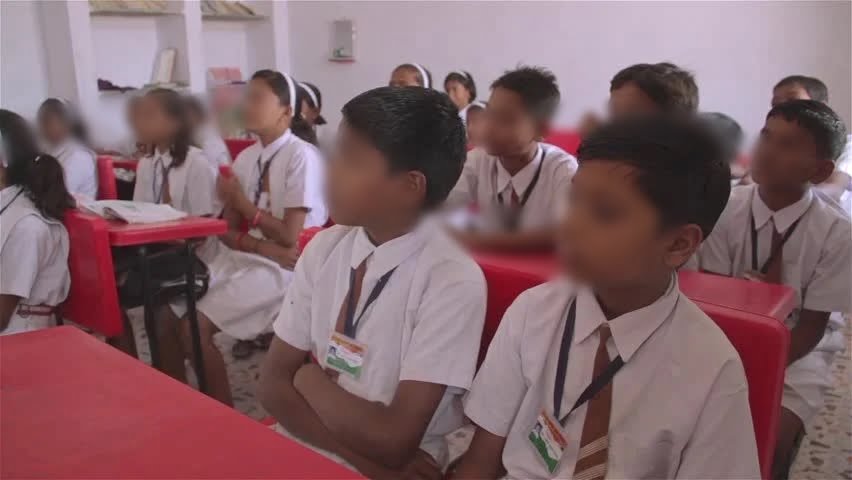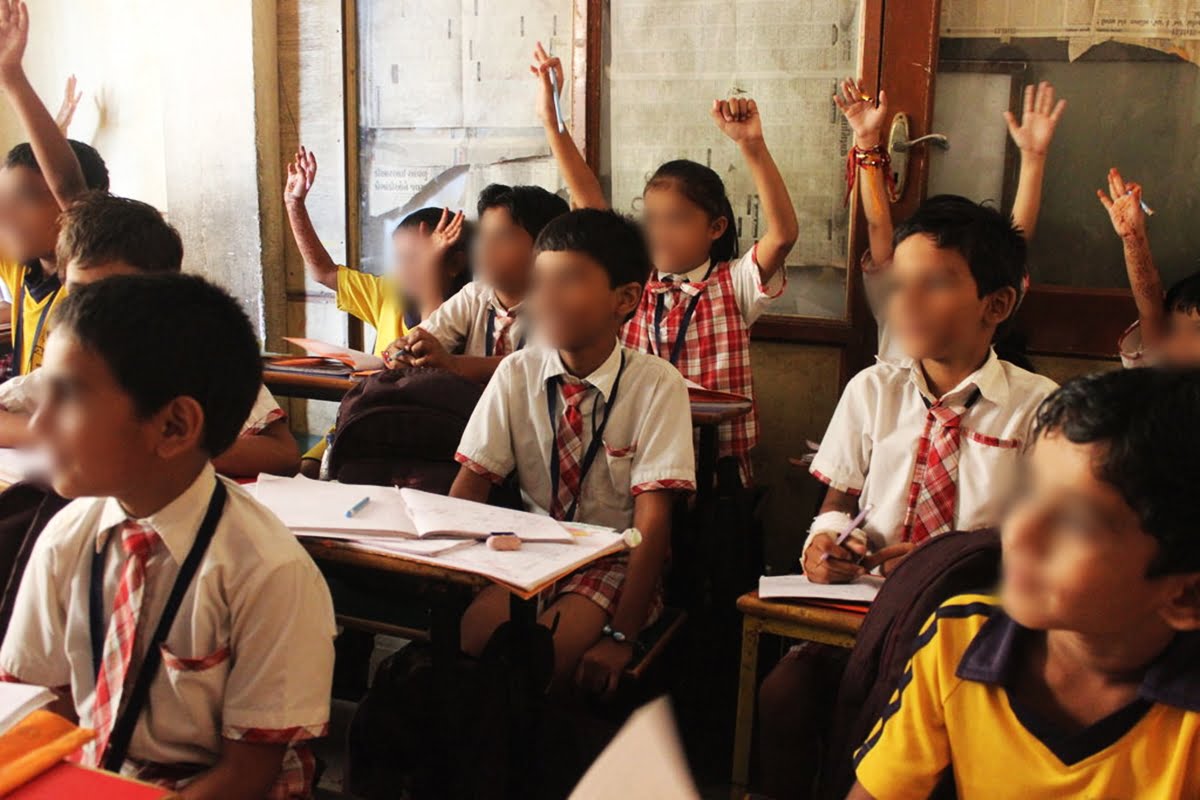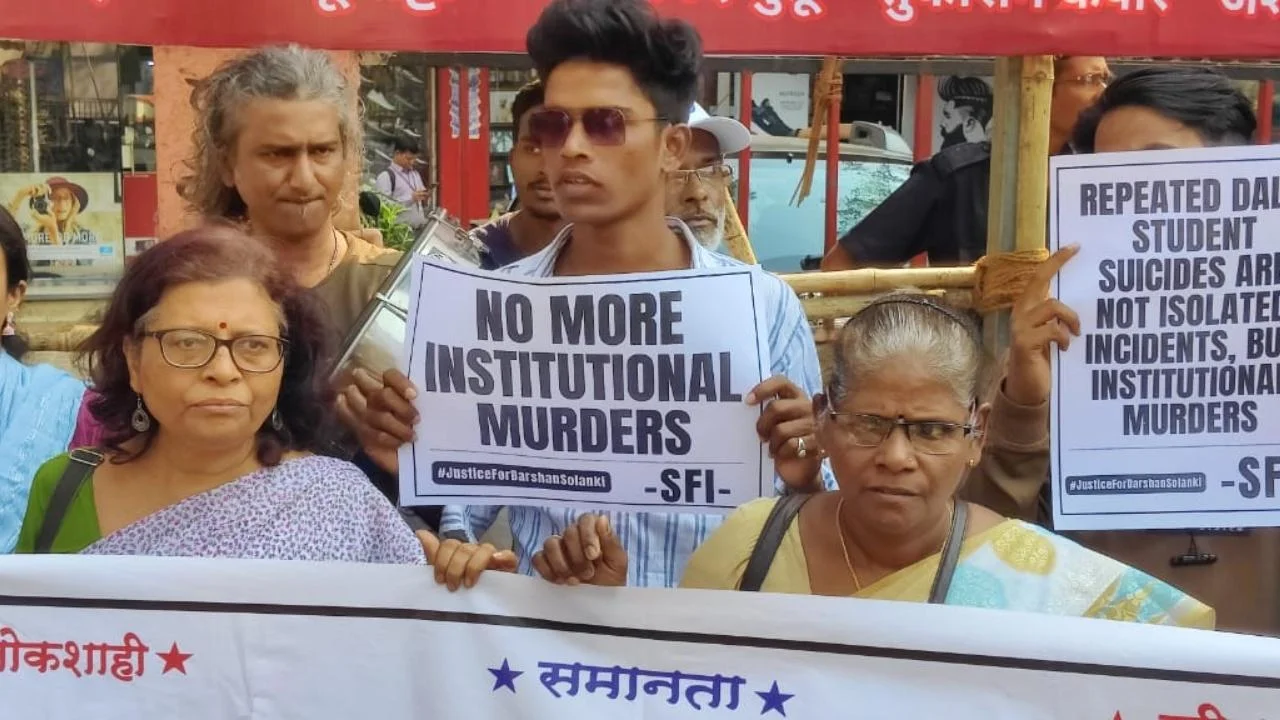‘Why is the length of your skirt so short? Don’t you know you study with boys!’
‘Why don’t you oil and braid your hair? Don’t you know boys will get distracted by your hair hanging loose!’
‘What future will you have by playing sports like basketball and cricket? Don’t you know these are boys’ games after all!’
‘Why do you smile so much while talking to your male classmates? Don’t you know boys will interpret it as a ‘welcoming yes’!’
With government policies like Right To Education (RTE), equal opportunities at school are often assumed a ‘given’ but, the privilege of being treated as equal to their male counterparts is hardly ‘given’ to the female students. While there is no denial that there are some extremely dedicated teachers motivated to understand adolescents’ issues and are determined to work towards their students’ welfare, it is imperative to talk about the many teachers who intentionally or unintentionally break young spirits!
Also read: Legitimising One Kind Of Ability & Objectivity: Our Academic Culture Needs Serious Reconsideration
“Ma’am, in my case my teachers were my bullies. Once during a Parents Teacher Meeting, I overheard my teacher telling all my peers’ parents to warn their wards to stay away from me. According to her, I was a bad influence on the other children of the class. I was extremely disturbed and felt lonely and left out after that experience. I forgot to mention, I was in 6th standard in one of the top schools of Delhi!” — Akshita (pseudonym), 18
Being an educator of Psychology at University of Delhi, many of my classes are experientially oriented. Since a few years, the number of female students who have found a safe space to share horrific incidents of enduring embarrassment and mortification during their middle and high school years have increased drastically. Inferring from their experiences, one can gather that some of the school teachers show no restrain in calling out the ‘deviant’ behaviour of girls as a sign of her ‘low character’ whereas a similar behaviour is brushed off as ‘boyish notoriety’ when exhibited by male students.
Some of the frequent reasons for which the female students are harshly reprimanded involve disobeying the ‘sexist’ dress code (which is designed with a clear intent to prevent the boys from being distracted!) – wearing kohl or lip gloss, not braiding the hair, or for their bra strap showing. What one often finds is that the boys’ reputation remains relatively undamaged or gets accentuated to the desirable ‘bad boy’ of the class after disobeying the rules in any form.
Some of the frequent reasons for which the female students are harshly reprimanded involve disobeying the ‘sexist’ dress code (which is designed with a clear intent to prevent the boys from being distracted!) – wearing kohl or lip gloss, not braiding the hair, or for their bra strap showing. What one often finds is that the boys’ reputation remains relatively undamaged or gets accentuated to the desirable ‘bad boy’ of the class after disobeying the rules in any form. However, the appalling experiences of young girls who are morally policed over mild discrepancies suggest that the school system sends a loud and clear message to its girls to learn to live with perpetual bigotry and display an unquestionable compliance to authority, failing which, the young girls are quickly labelled as ‘sluts’, ‘whores’, and ‘wannabes’, by the teachers as well as other students.
“One of my friends in the maths tuition was called the R-word by our tuition teacher who thought that the boy sitting next to her has kept his head in her lap. She kept explaining that he was picking up his pen and that is why his head touched her lap, but nothing changed. The boy was neither questioned nor asked to explain. The teacher verbally abused the girl to a point that she had to leave the class in tears. We never saw her in the same tuition again.” —Jasleen (pseudonym), 19
For my doctoral work, I was studying the dynamics of inclusion and exclusion in a low socio-economic educational context for which I had conducted many focus group discussions and narrative interviews with students, teachers, and other stakeholders. I realized female students perceive exclusion in the form of physical, psychological, and curricular restrictions. Most teachers and parents seem to have a utilitarian approach for educating the girl child: ‘if we teach a girl, we teach a family’. The level of her education is conveniently controlled to make her suitable for a domesticated life ahead.

Most of the female students cease to enjoy the right and freedom of choice pertaining to her education and pursual of dreams. The ideology to confine females in the inner spaces with a constant check on the clothes they wear, the people they interact with, or even the way they laugh or move their bodies is a suffocating yet painfully real experience for most of the female students. To avoid any ‘mishappening’, teachers often prefer girls to stay in classrooms and play some indoor games or read a book during the games period. To say the least, such experiences at a young age serve as a critical reminder to the young females to always be extremely mindful of their boundaries in the times to come too, breaching of which would mean confiscation of whatever limited movement is permitted, forceful dropping out of school or worse, being married off early.
“Didi, main 9th class mein padhti hun aur school mei mere mere bahut ache dost hain, jinmein kuch ladke bhi hain. Woh sab bachpan se mere ache dost hain. Ek din main ek ladke se lunch ke waqt sports ground mein khade hoke baat kar rahi thi, tabhi meri samajik vigyaan ki teacher ne aake mujhe khoob daanta ki main ladkon se baatein karke apne maa baap, yahan tak ki apne teachers ki bhi naak katwa rahi hun. Unka kehna tha ki isi wajah se mere number kum aate hain. Didi, un madam ne ek baar nahi socha ki mujhe kitna sharminda hona pada sabke saamne. Uske baad main ek hafte tak school nahi gayi. Ghar pe bhi bahana kara ki tabiyat kharab hai, kyunki kehne ki himmat nahi hui ki kyun school nahi jaana.” — Seema (pseudonym), 16
(Didi, I study in the ninth standard at school and I have many good friends there, which include boys as well who have been my good friends since childhood. One day, as I was on the sports ground speaking to one of the boys during the lunch break, my Social Science teacher scolded me saying that I was humiliating my parents and even my teachers by speaking to boys. She said that this is why I would score less. Didi, that teacher did not think once about how this was an insulting experience for me. After that, I did not go to school for a week. I had to make excuses of having fallen sick at home too, because I did not have the courage to tell them the truth.” — Seema (pseudonym), 16)
According to many female students, teachers, too, treat the boys as the ‘Raja Betas’ (princes) so much so that their acts of subjugation and violence against their female peers are brushed off as ‘choti si baat’ (a small thing), under the garb of the ever-famous ‘boys will be boys’. The easiest solution that the teachers offer to resolve disputes pertaining to gender-based harassment is ‘shake hands and become friends again’. Some of the teachers shared some ‘preventive measures’ which they adopted to avoid such issues which was commonly referred by them as ‘ladki ladke ka chakkar’ (an affair between the boy and the girl).
One of the most common forms of keeping the girl-boy interaction in check emerged to be the idea of seating them separately from a young age. As problematic as it may sound, they believe that they are successful enough in carrying out their ‘assumed’ responsibility of preventing the boys from being distracted and protecting the ‘izzat’ (honour) of the girls and their khandaans.

‘Dekho Madam ji, hum teachers ko in ladke ladkiyon ke sath sakhti se pesh aana padta hai warna naa toh yeh ladke aage chalke do waqt ki roti kama payenge aur naa hi yeh ladkiyan ache se ghar basaa payengi. Jab yeh bache class mein huddang macha ke jawaab dete hain tab bhi main inko yahi sikhata hun ki ladkiyan zyada zor se tez tez jawaab naa de. Pehle ladko ko bol lene de, uske baad hi saleeke se apni baat rakhein. Abhi se agar seekhengi toh aage chalke ghar pariwar mein sabka mann jeet lengi. Shikshak hone ke naate yeh meri zimmedari hai ki main inko samaj ke taur tareeke bhi sikhaun aur inko ek acha insaan banaun.” — Shri Bhanu (pseudonym), 47, Teacher
(See madam, we teachers have to be strict with these boys and girls, otherwise these boys would not become adept to earn nor would the girls be prepared to build their homes. When these children create a ruckus in the class, I teach them that girls should not be so loud in their responses: That they should first let the boys to speak and then, put forth their point of view peacefully. Only if they learn these things now will they win the hearts of their family members later. As their teacher, it is my responsibility to teach them the ways of the society and make them a good person. — Shri Bhanu (pseudonym), 47, Teacher)
Also read: NCERT Manual & Gender-Sensitive, Trans-Inclusive Approaches To Education
While the concluding intent of the teacher might seem to carve good human beings out of his students, the thought process behind it is strongly clouded by the patriarchal definition of a ‘good girl’ or a ‘sanskaari ladki’. In other words, the stereotypical gender roles are deeply crystallized in the minds of the teachers who refuse to view the scenario from a gender-responsive lens.
The long list of ‘shoulds’ that women are burdened with is not spared even during their school life, implicitly suggesting them to be receptive to the so-called ‘training’ to behave like an ‘aagyakari bahu’ (obedient daughter-in-law) from an early age. Boys, on the other hand, tend to legitimize ‘male privilege’ in the form of outrageous words and actions against girls because every day they witness sanctioned forms of patriarchal superiority by the people who exhibit authority at home and school. The lack of penal consequences as well as a continuous reinforcement of the idea ‘yeh kamzor ladkiyan aakhir kya hi kar lengi?’ (what will these weak girls do anyway?) lead to an increased risk of gender-based discrimination and violence in schools.
It is unfortunate that most of the educational institutions of our country fail to provide spaces to accommodate experiences and voices of the female students, and largely remain unmoved by their predicament. The idea of blaming the victim runs deep into the collective psyche of our culture. Teachers openly say to the female students, ‘Girls like you incite boys and then cry wolf’. Most parents often find it difficult to come to terms with the reality and flinch away at the thought of their daughters being harassed. They prefer to categorize such ‘episodes’ in the context of ‘friendly banter’, which is a socially acceptable aspect of school life; leaving their daughters scarred and distrustful for the rest of their lives.
‘I still can’t forgive my teachers and parents for not saying a word about this terrible incident. I was in 7th standard when a boy came to me to ask for a book in library which I was reading. I told him that I will give him once I am done reading. He pounced on me and inserted the nib of his pencil deep inside my shoulder leaving a deep dark scar. When I told my teachers, they asked him to say sorry (which he shamelessly did!) without any punitive action against him. My parents consoled me that the scar won’t stay on my body for long. They never understood that the scar on my soul will remain forever.’ – Sakshi (pseudonym), 20
Being equally toxic for men, the patriarchal notion of masculinity does not offer room for boys (or men) who might deviate from the stereotypical images that define ‘manliness’ in physical, emotional, or behavioural manner. The experiences of a few boys being shamed and humiliated for not behaving like a ‘man’ emphasizes the need for gender transformative approach in classrooms and beyond. Many students shared secondary experiences of their male friends being targeted for having effeminate attributes like fair skin, enlarged breasts, or having less facial hair. Some of the boys were even deemed ‘sissies’ for being caring, empathetic, and understanding towards others. At deeper level, our school system becomes a breeding ground for toxic masculinity by coercing the boys to fall into the stereotypical gender roles by aggressing, using cuss words, or indulging in macho tasks like teasing girls, or showing dominance.
‘Ma’am, I want to share the everyday harassment faced by one of my close male friends who was still exploring his sexuality and orientation. His demeanour was feminine for which he was targeted daily by students and even some of the teachers. Once during our class, the English teacher instructed all the girls to stand up and form a queue. A moment later, she took a jibe on my friend and asked him to join the girls too with a sarcastic smile.’ – Pranali (pseudonym), 18
As we talk about gender, including experiences of those students who do not identify with either of the gender binaries or are yet to figure out their gender and/or sexual identity is indispensable. Having said this, the challenges faced by students belonging to the LGBTQIA+ community largely remain unnoticed and deserve mainstream attention. Homophobia is a palpable reality of Indian classrooms, to an extent that students are scared to take any step towards exploring their sexuality or even coming out of the closet. It is true that schools are a microcosm of society that prepare the students for the outer world. However, this also entails the tacit entry of the questionable ideologies prevalent in the society into the school value system through its teachers and even students.
If we really want to stand up to the slogan ‘Beti Bachao, Beti Padhao’, the teachers should be considered as the first responders who need to be sensitized and encouraged to re-evaluate their personal attitudes and belief systems about the complex interplay of gender and education in our society.
If we really want to stand up to the slogan ‘Beti Bachao, Beti Padhao’, the teachers should be considered as the first responders who need to be sensitized and encouraged to re-evaluate their personal attitudes and belief systems about the complex interplay of gender and education in our society. With a gender-transformative approach, the Indian education system is in dire need for national level capacity building of its teachers towards adolescence education (including sex education), gender-based challenges, and creating inclusive and safe classrooms for all. Although many non-profit organizations and governments are making efforts in this direction, the need of the hour is to focus on empowering all the students, especially those belonging to the marginalised and oppressed identities, towards a promising future with equitable opportunities and a gender-responsive milieu.
Dr Aakanksha Bhatia is the founder of Together We Can, an organization working towards empowering students and teachers by building their capacity in the SEL and Life Skills space. She is also working as an Assistant Professor/Founding Faculty Member at the Department of Psychology, Lakshmibai College, University of Delhi. She also consults with various organizations and has single-handedly led many large scale projects funded by international organizations like UNDP, UNICEF, CSF etc. On a personal front, she is a hands-on mother to a toddler and a furry baby. She loves to read and travel. You can find her on Instagram, Twitter and LinkedIn.
Featured image source: Global Giving




